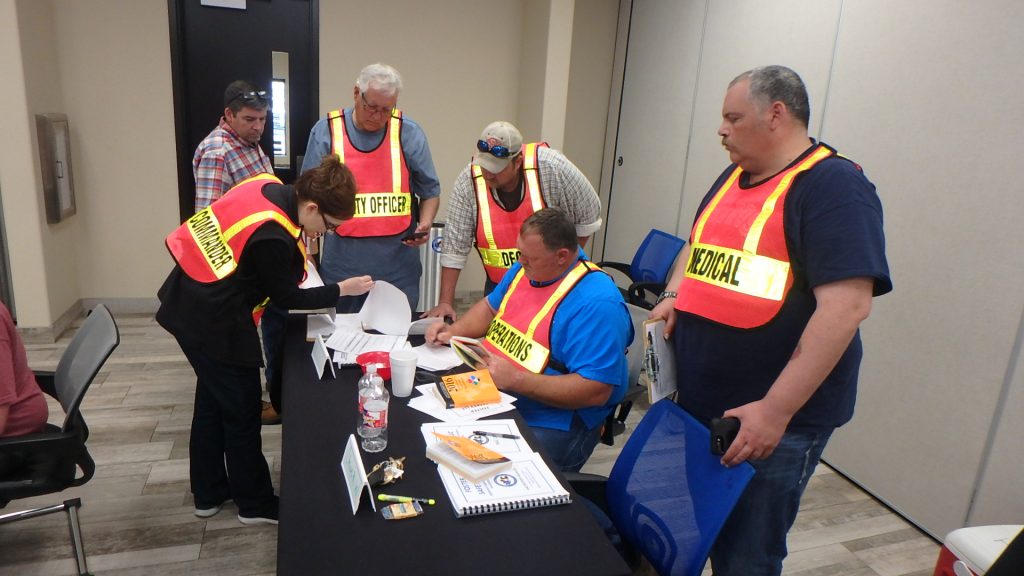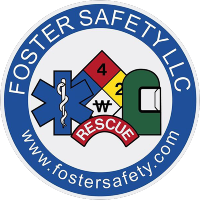 Incident Command N.I.M.S. 300
Incident Command N.I.M.S. 300
Prerequisites:
HAZMAT Awareness and Core Operations Level as per 29 CFR 1910.120 (q) (6) (i) and 29 CFR 1910.120 (q) (6) (ii).
Course:
Content is designed to meet or exceed the requirements of OSHA 1910.120(q) (6) (v) (A-F) On-Scene Incident Commander training. Curriculum includes the following:
1910.120(q) (6) (v) (A) Know and be able to implement the employer’s incident command system.
1910.120(q) (6) (v) (B) Know how to implement the employer’s emergency response plan.
1910.120(q) (6) (v) (C) Know and understand the hazards and risks associated with employees working in chemical protective clothing.
1910.120(q) (6) (v) (D) Know how to implement the local emergency response plan.
1910.120(q) (6) (v) (E) Know of the state emergency response plan and of the Federal Regional Response Team.
1910.120(q) (6) (v) (F) Know and understand the importance of decontamination procedures.
Students will demonstrate the ability to implement the employer’s Emergency Response Plan through tabletop exercises and practical application during site-specific scenarios.
Documentation includes the development of Incident Briefing Plans (recorded on ICS Form 201), Incident Action Plans to include setting incident priorities, establishing goals/objectives (ICS 202), assigning personnel (ICS 203/204), a communications plan (ICS 205), a medical plan (ICS 206), and organizational chart (ICS 207), a safety plan (ICS 208) and what resources that are needed/available (ICS 215), and Site Safety and Control Plans (recorded on ICS Form 208). Course also includes medical monitoring criteria and documentation for HAZMAT incidents.
The course content also includes some fundamentals of ICS-300, Intermediate ICS for Expanding Incidents, with the following course objectives:
- Describe how the NIMS Command and Management component supports the management of expanding incidents.
- Describe the incident/event management process for expanding incidents and supervisors as prescribed by the Incident Command System (ICS).
- Implement the incident management process on a simulated Type 3 incident.
- Develop an Incident Action Plan for a simulated incident.
This training concludes with a written exam.
Advantages to a Site-Specific ICS-300:
1. Activities will be more appropriate to private sector industry. Examples of the standard activities include a bus accident, earthen dam breaking, iced-over roads, active shooter inside a hospital, contaminated pet food, and other various scenarios. While these are good in reaching a broad base audience, it lacks the specificity that could help industry pre-plan for site-specific emergencies. Site-specific ICS 300 will cover the same concepts and material but will use local emergency response plans, mutual aid agreements, site-specific organizational structures, on-site safety data sheets and chemicals/processes commonly used that help students prepare for emergencies they might encounter.
2. Activities will be more appropriate to private sector industry. Examples of the standard activities include a bus accident, earthen dam breaking, iced-over roads, active shooter inside a hospital, contaminated pet food, and other various scenarios. While these are good in reaching a broad base audience, it lacks the specificity that could help industry pre-plan for site-specific emergencies. Site-specific ICS 300 will cover the same concepts and material but will use local emergency response plans, mutual aid agreements, site-specific organizational structures, on-site safety data sheets and chemicals/processes commonly used that help students prepare for emergencies they might encounter.
3. More flexibility. Standard ICS 300 Classes are set as far as time frames, activities, and are not as convenient as on-site. On-Site/Site-Specific allows for more time to be spent on areas needing more attention and less on subject matter or scenarios that have little to do with industrial emergencies.
Location: Foster Safety LLC, Beaumont, Texas
Dates: See Training Calendar or Request
Time: 24 to 40 Hours
*Breakfast, Lunch & Refreshments provided daily.

